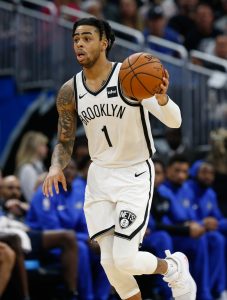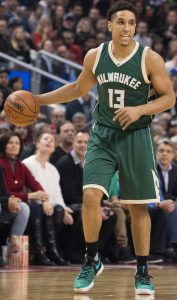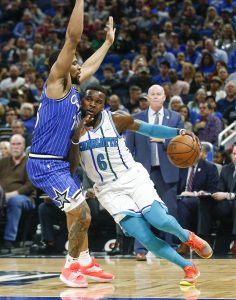For a star like Kevin Durant, the results of the 2018/19 season haven’t had much of an impact on his projected earnings in free agency. Heading into the season, the expectation was that Durant would land a maximum-salary contract; that hasn’t changed. In fact, barring a catastrophic injury, it’s hard to imagine what KD could have done this season that would’ve significantly impacted his stock as his free agency nears.
For most other NBA players in contract years though, their performance on the court this season will go a long way toward determining what sort of offers they’ll get this summer. There are several players around the league who have increased their value significantly with their on-court showings in 2018/19 and figure to do better than originally expected in free agency this year as a result.
Today, we’ll shine a spotlight on some of these players from the Eastern Conference, identifying five 2019 free-agents-to-be who have improved their stock with their play this season.
Let’s dive in…
 D’Angelo Russell, G, Nets (RFA): We’ve written repeatedly about Russell’s ascension this season, but it’s still worth reiterating how impressive it has been. It’s easy to forget now, but before Caris LeVert dislocated his foot in November, it was LeVert that looked like the Nets guard headed for a breakout year. Instead, Russell has emerged as The Man in Brooklyn, averaging 21.8 PPG, 7.4 APG, and 3.7 RPG on .436/.366/.792 shooting in the 60 games since that LeVert injury. Assuming the Nets can hold onto a playoff spot, D-Lo will have the opportunity to turn a few more heads in the postseason, positioning himself for an annual salary between $20MM and the max.
D’Angelo Russell, G, Nets (RFA): We’ve written repeatedly about Russell’s ascension this season, but it’s still worth reiterating how impressive it has been. It’s easy to forget now, but before Caris LeVert dislocated his foot in November, it was LeVert that looked like the Nets guard headed for a breakout year. Instead, Russell has emerged as The Man in Brooklyn, averaging 21.8 PPG, 7.4 APG, and 3.7 RPG on .436/.366/.792 shooting in the 60 games since that LeVert injury. Assuming the Nets can hold onto a playoff spot, D-Lo will have the opportunity to turn a few more heads in the postseason, positioning himself for an annual salary between $20MM and the max.- Nikola Vucevic, C, Magic: To thrive in the modern NBA, a center generally needs to be able to shoot from outside or protect the rim — or both. Neither skill had ever been a huge part of Vucevic’s game, but he has proven he’s adaptable in recent years. In 72 games this season, the Magic center is putting up career highs in 3PT% (.366), total 3-pointers (74), and BPG (1.2). His 20.7 PPG and 12.1 RPG are also career bests, buoying him to his first career All-Star Game. At age 28, Vucevic may not be in line for a massive payday, but he appears set to get a nice raise on his current $12.75MM salary, which was hardly a lock heading into the season.
- Bojan Bogdanovic, G/F, Pacers: A sharpshooting role player prior to joining the Pacers, Bogdanovic has taken his game to another level this season — especially since Victor Oladipo suffered a season-ending quad injury in January. Having never averaged more than 14.3 PPG in a season, the 29-year-old has posted a blistering .509/.403/.794 shooting line in the 27 games since Oladipo went down, averaging a team-high 21.3 PPG in that stretch. Bogdanovic isn’t an elite defender, but any wing who can knock down threes at the rate he can will do well for himself in free agency.
- Danny Green, G, Raptors: While All-Stars Kawhi Leonard and Kyle Lowry and Most Improved Player candidate Pascal Siakam have – deservedly – received much of the credit for the Raptors‘ success this year, Green shouldn’t be overlooked. Viewed as almost a throw-in in the deal that sent Kawhi to Toronto, Green has had a terrific bounce-back season, knocking down a scorching 44.3% of his 3-point attempts. His on/off-court numbers exhibit his importance — the Raptors have a +12.2 net rating when he plays, compared to a -5.0 mark when he sits. An ideal three-and-D wing, Green should be in line for another lucrative multiyear deal this summer.
- Brook Lopez, C, Bucks: Like Vucevic, Lopez has avoided becoming an NBA relic by modernizing his game. Once a fixture in the low post, the 30-year-old can now frequently be found a few steps behind the arc, having earned the nickname Splash Mountain by knocking down threes and helping to space the Bucks‘ offense. Lopez is more of a role player than the core piece he was in Brooklyn, but his shooting (2.4 3PG, .371 3PT%) and rim protection (2.2 BPG) make him a valuable contributor. Milwaukee almost certainly won’t be able to bring him back at the same bargain-basement rate he agreed to in 2018 ($3.4MM).
Photo courtesy of USA Today Sports Images.
 After nearly three years away from the NBA,
After nearly three years away from the NBA,  Shelvin Mack
Shelvin Mack